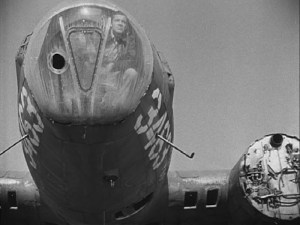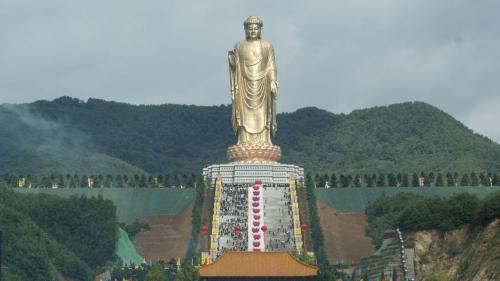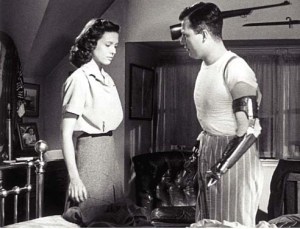SEPTEMBER 1, 1939
I sit in one of the dives
On Fifty-second Street
Uncertain and afraid
As the clever hopes expire
Of a low dishonest decade:
Waves of anger and fear
Circulate over the bright
And darkened lands of the earth,
Obsessing our private lives;
The unmentionable odour of death
Offends the September night.
Accurate scholarship can
Unearth the whole offence
From Luther until now
That has driven a culture mad,
Find what occurred at Linz,
What huge imago made
A psychopathic god:
I and the public know
What all schoolchildren learn,
Those to whom evil is done
Do evil in return.
Exiled Thucydides knew
All that a speech can say
About Democracy,
And what dictators do,
The elderly rubbish they talk
To an apathetic grave;
Analysed all in his book,
The enlightenment driven away,
The habit-forming pain,
Mismanagement and grief:
We must suffer them all again.
Into this neutral air
Where blind skyscrapers use
Their full height to proclaim
The strength of Collective Man,
Each language pours its vain
Competitive excuse:
But who can live for long
In an euphoric dream;
Out of the mirror they stare,
Imperialism’s face
And the international wrong.
Faces along the bar
Cling to their average day:
The lights must never go out,
The music must always play,
All the conventions conspire
To make this fort assume
The furniture of home;
Lest we should see where we are,
Lost in a haunted wood,
Children afraid of the night
Who have never been happy or good.
The windiest militant trash
Important Persons shout
Is not so crude as our wish:
What mad Nijinsky wrote
About Diaghilev
Is true of the normal heart;
For the error bred in the bone
Of each woman and each man
Craves what it cannot have,
Not universal love
But to be loved alone.
From the conservative dark
Into the ethical life
The dense commuters come,
Repeating their morning vow;
‘I will be true to the wife,
I’ll concentrate more on my work,’
And helpless governors wake
To resume their compulsory game:
Who can release them now,
Who can reach the dead,
Who can speak for the dumb?
All I have is a voice
To undo the folded lie,
The romantic lie in the brain
Of the sensual man-in-the-street
And the lie of Authority
Whose buildings grope the sky:
There is no such thing as the State
And no one exists alone;
Hunger allows no choice
To the citizen or the police;
We must love one another or die.
Defenseless under the night
Our world in stupor lies;
Yet, dotted everywhere,
Ironic points of light
Flash out wherever the Just
Exchange their messages:
May I, composed like them
Of Eros and of dust,
Beleaguered by the same
Negation and despair,
Show an affirming flame.”
― W.H. Auden, Another Time
The poet W.H. Auden wrote this poem, September 1, 1939, as the Germans invaded Poland in 1939, marking the beginning of World War II. I realize that many of you may not enjoy poetry but I think this is one that deserves a few minutes of your time, one that speaks of that time and this time. The final two verses resonate with me and mirror my own feelings as I watch the death toll from the pandemic grow with each passing day– over 6000 deaths here in the past two days alone– and the acts of sedition taking place within our government and the courts as dishonest men attempt to undo the will of our electorate.
Both are insidious, slowly creeping upon us so that many of us pay little attention and go about our days trying to act as though nothing is taking place. If the deaths were violent and amassed quickly within a day or so, we would respond with an outcry and greater action. The same with the attempted coup d’etat we have at hand. Both plod forward in a slow manner so that we somehow think it is almost normal.
It’s not. And thinking, reasonable people can see this. It brings despair but it also brings out, as Auden put it, an affirming flame in many. A stirring to action in a time when so many are complicit with their silence and the loudest voices are from the worst among us.
In the end it comes down to this, again from Auden:
There is no such thing as the State
And no one exists alone;
Hunger allows no choice
To the citizen or the police;
We must love one another or die.
Do not let your guard down. Be careful out there and have a good day.
If you don’t like to read poetry, here’s a fine reading of this piece from actor Michael Sheen.






 Chaim Soutine was yet another brilliant but tragically short lived painter, dying at the age of 50 in 1943. He was a Russian Jew who studied art as a youth in his native Belarus then emigrated to Paris in 1913. There, among the many diverse artistic influences, his distinct expressionistic style found its voice and over the next two decades he produced a powerful body of work. However, he wasn’t hailed as the great painter he truly was until the days just before the start of World War II.
Chaim Soutine was yet another brilliant but tragically short lived painter, dying at the age of 50 in 1943. He was a Russian Jew who studied art as a youth in his native Belarus then emigrated to Paris in 1913. There, among the many diverse artistic influences, his distinct expressionistic style found its voice and over the next two decades he produced a powerful body of work. However, he wasn’t hailed as the great painter he truly was until the days just before the start of World War II.



















